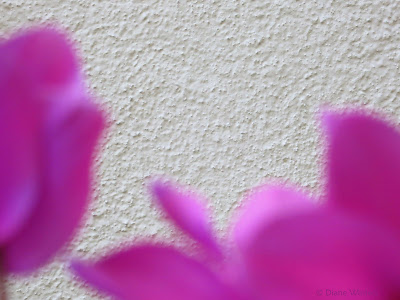Will I color outside the lines? Where are the lines?
When I was a child, my parents never asked me to do or not do anything without explaining why. So rules never existed “just because”, but for a reason. And if a reason could be explained, it could therefore be questioned.
As an adult, having never taken a formal photography course, I’ve not had rules about taking photographs handed to me. But over the course of time through reading articles, taking my own photographs, and also doing various kinds of design work in 2D, I realize I have absorbed and developed a set of rules. It’s time to examine and question them.
Most of them involve aesthetics, but some relate to subject matter and to the emotional impact of the photo on other people.
I usually aim for a sense of balance in composition. There can be open, vacant space if it serves to balance another area that’s rich with content (detail, or emotional content, or whatever). Dark and light areas should be roughly equal – the image should not seem under- or overexposed. Any visual “weight” should be in the lower portion, so the image doesn’t seem top-heavy. Now when I seriously consider these, I don’t think there’s a single one that couldn’t be ignored for the sake of effect.
In fact, I think that’s the key - intended effect. For instance, I can ignore a rule that the main subject should be in focus, if the intent is to show motion. Or the photo can look accidental, haphazard, if the intent is to suggest confusion or disorientation.
What’s been very interesting to me in examining my “rules” is that sometimes I apply rules or principles to my own photographs that I don’t at all mind seeing other photographers break.
For example, I would not think to crop off part a person’s or animal’s face, but I’ve seen interesting photographs that did just that, including one of a horse by one of the members in the January Find Your Eye class, where I thought it worked VERY effectively. The muzzle was cut off. This did two things: it gave more emphasis to the remarkable expression in the horse’s eye and it also reminded me of the way a horse will move its head, like the photo caught it in motion.
Another rule I apply to my own work is that an image can be a little disturbing, but not too much so, even though I find it perfectly all right for others to take disturbing photos. I faced the question of how edgy I was willing to be after I took the photograph below.
This image to me is not at all disturbing, only intriguing, a bit mysterious. But after I took the photo, I discovered that the billboard advertised a charity that does surgery on cleft palates, and it was that portion of the child’s face that was blocked by the tree. For several days I considered going back and taking a second photo with the mouth showing, and wrestled with whether it would cross the line, not for anyone else to have taken, but for me to take. I thought I could at least take it and then decide, but in the end I let it go. I still regret my decision. However, for the sake of this lesson, I searched the internet, figured out what charity it was (Smile Train) and even found the same child’s photo on their website. With a bit of manipulation in Photoshop I’ve managed to recreate the way it might have looked.
In this case, I don’t think the inclusion of the cleft palate enhances the photo in any way; in fact, it detracts – the disturbing aspect here is merely gratuitously so. Not all impulses to take certain photos are good ones.
It’s still my own choice generally NOT to take disturbing photos, but I’ve decided I don’t want to make that a rule that limits me. I’d rather learn from a mistake and discard a photo later than regret not taking it in the first place.



























